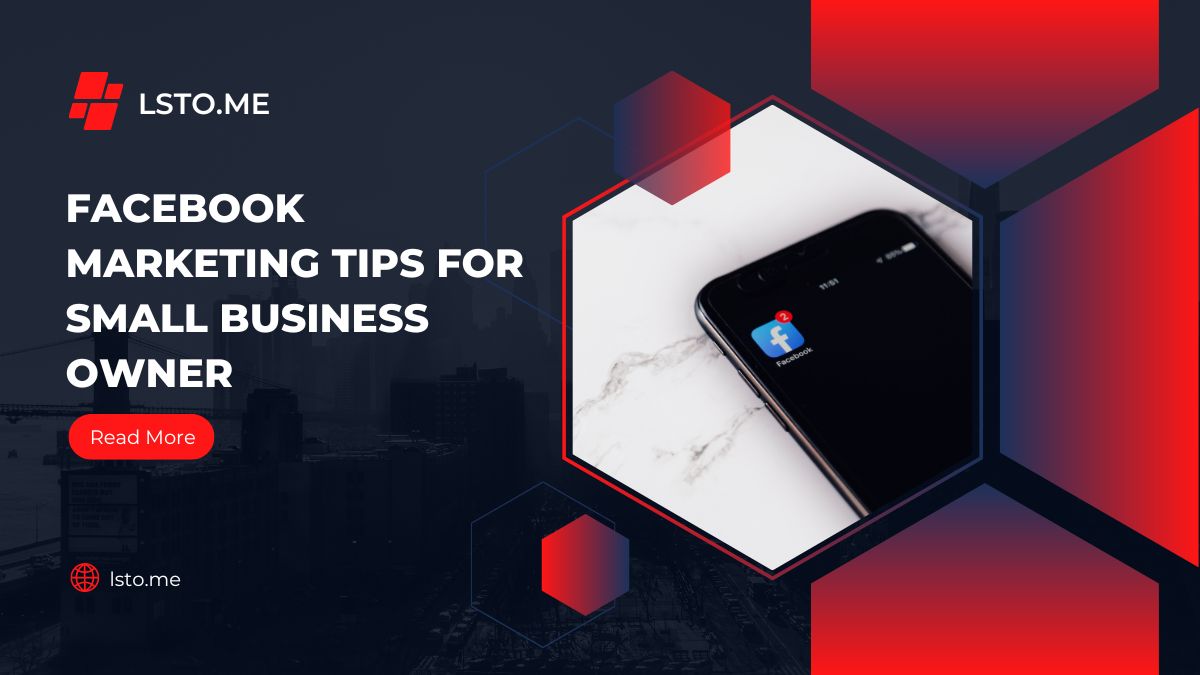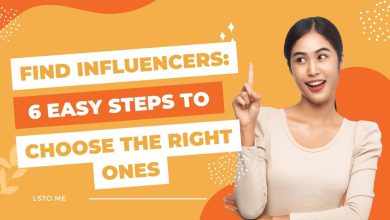
In the digital age, Facebook is a key platform for small businesses. It helps them connect with their target audience, build brand awareness, and drive sales. Facebook has 2.8 billion monthly users. It is a vast potential customer pool. However, small businesses must use effective marketing to maximize this platform. This guide offers Facebook marketing tips for small businesses. It helps you maximize your reach, engagement, and ROI.
1. Create a Business Page, Not a Personal Profile
The first step in your Facebook marketing is to create a Facebook Business Page, not a personal profile. A Business Page has features for businesses. It includes analytics, ads, and post scheduling.
Why a Business Page?
Access to Insights: Facebook Insights provides data on your page’s performance, including audience demographics, post reach, and engagement.
Advertising Tools: You can create and manage ads, target specific demographics, and track ad performance.
Professional Appearance: A Business Page allows you to add a cover photo, contact information, and a call-to-action (CTA) button, giving your page a professional look.
How to Set It Up
Go to Facebook’s “Create a Page” section.
Choose the type of business page you want to create.
Fill in the necessary information, such as your business name, category, and description.
Add a profile picture and cover photo that represents your brand.
2. Optimize Your Facebook Business Page
Once your Business Page is set up, it’s essential to optimize it to ensure it appeals to your target audience and ranks well in search results.
Use a Professional Profile Picture and Cover Photo
Profile Picture: Use your company logo or a professional image that represents your brand.
Cover Photo: Choose a visually appealing image that reflects your brand’s identity or promotes a current campaign.
Complete the About Section
Business Information: Include key details such as your business’s mission, products or services, contact information, and operating hours.
Username: Create a unique username that makes it easier for people to find your page.
Call-to-Action (CTA) Button: Add a CTA button that aligns with your business goals, such as “Shop Now,” “Contact Us,” or “Sign Up.”
Enable Messaging
Enable messaging on your Business Page to allow customers to contact you directly. Responding promptly to messages helps build trust and improves customer service.
3. Develop a Content Strategy
A strong content strategy is key to engaging your audience and building a loyal following on Facebook.
Understand Your Audience
Audience Insights: Use Facebook’s Audience Insights tool to gather data on your audience’s demographics, interests, and behaviors.
Customer Personas: Develop customer personas to guide your content creation process, ensuring your posts resonate with your target audience.
Content Types
Educational Content: Share tips, how-to guides, and informative articles related to your industry.
Promotional Content: Announce sales, promotions, and new product launches.
User-Generated Content: Encourage your customers to share photos or testimonials about your products, and repost them on your page.
Engagement Posts: Ask questions, run polls, or create interactive content to engage your audience.
Content Calendar
Create a content calendar to plan and schedule your posts in advance. A consistent posting schedule helps maintain engagement and keeps your audience informed.
4. Utilize Facebook Ads
Facebook’s ads help small businesses reach their target audience.
Targeting Options
Demographic Targeting: Target users based on age, gender, location, and other demographic factors.
Interest Targeting: Reach people who have shown interest in topics related to your business.
Custom Audiences: Upload your customer list or target people who have interacted with your website or Facebook page.
Lookalike Audiences: Target people who are similar to your existing customers.
Ad Formats
Image Ads: Simple and effective, these ads use high-quality images to capture attention.
Video Ads: Videos can be more engaging than static images, showcasing your products or telling your brand story.
Carousel Ads: Showcase multiple products or features in a single ad, allowing users to swipe through images or videos.
Collection Ads: Ideal for mobile users, collection ads allow people to browse your products directly within the Facebook app.
Set a Budget
Facebook ads can fit any budget. Set a daily or lifetime budget based on your goals, and monitor your ad performance to optimize spending.
5. Leverage Facebook Groups
Facebook Groups offer a community-driven way to connect with your audience. Consider creating a group related to your industry or joining existing groups where your target audience is active.
Create Your Own Group
Niche Focus: Create a group that focuses on a specific niche related to your business. This could be a space for customers to share tips, ask questions, or discuss industry trends.
Engage Regularly: Be active in your group by posting regularly, responding to comments, and encouraging discussions.
Exclusive Content: Offer group members exclusive content, discounts, or early access to new products to foster a sense of community.
Join Relevant Groups
Participate in groups where your target audience is already active. Provide value by answering questions, sharing expertise, and subtly promoting your business.
6. Host Facebook Events
Hosting events on Facebook can increase your brand’s visibility and drive engagement.
Types of Events
Webinars: Host educational webinars on topics relevant to your audience.
Live Q&A Sessions: Engage with your audience in real-time by answering their questions live.
Product Launches: Announce new products or services with a live demonstration or event.
Promote Your Event
Use Facebook’s event promotion tools to reach a wider audience. Encourage your followers to RSVP and share the event with their friends.
7. Analyze and Adjust Your Strategy
To ensure your Facebook marketing efforts are effective, regularly analyze your performance and make adjustments as needed.
Use Facebook Insights
Post Performance: Track the reach, engagement, and click-through rates of your posts to identify what content resonates with your audience.
Audience Growth: Monitor the growth of your follower base and the demographics of new followers.
Ad Performance: Review the performance of your ads, including cost per click (CPC), return on ad spend (ROAS), and overall conversions.
Adjust Your Strategy
Content Tweaks: Adjust your content strategy based on what types of posts perform best.
Ad Optimization: Test different ad creatives, targeting options, and formats to find the most effective combination.
Engagement Tactics: Experiment with different engagement tactics, such as running contests, asking questions, or hosting giveaways.
8. Stay Updated on Facebook Changes
Facebook frequently updates its algorithm and features. Staying informed about these changes is crucial for maintaining an effective marketing strategy.
Follow Industry Blogs
Subscribe to digital marketing blogs and Facebook’s own business blog to stay informed about the latest updates.
Experiment with New Features
When Facebook introduces new features, be one of the first to test them. Early adoption can give you a competitive edge.
Attend Webinars and Conferences
Participate in webinars and conferences focused on social media marketing to learn about emerging trends and best practices.
Conclusion
Facebook offers small business owners a powerful platform to connect with potential customers, build brand loyalty, and drive sales. By implementing these Facebook marketing tips, you can create a strong online presence, engage your audience, and achieve your business goals. Remember, consistency and adaptability are key to a successful Facebook marketing strategy. Regularly review your performance, stay updated on platform changes, and be willing to adjust your tactics as needed. With the right approach, Facebook can become a cornerstone of your small business’s digital marketing efforts.




